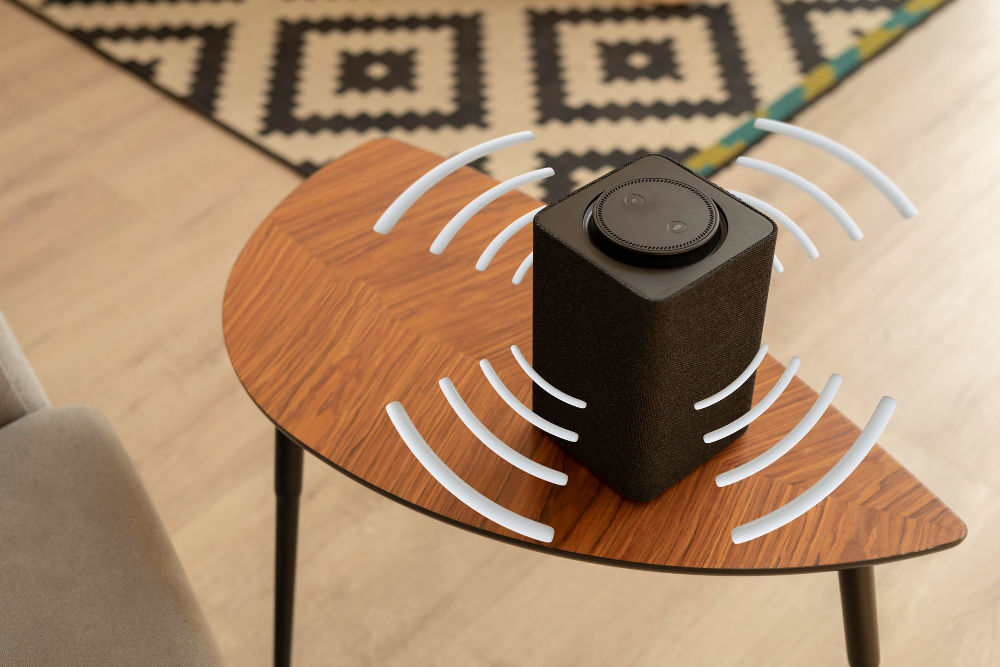Imagine sitting in your living room, surrounded by rich, immersive sound, all without the hassle of tangled wires. That’s the beauty of Bluetooth home theater speakers—they offer seamless audio experiences while keeping your space clutter-free. But with so many options available, how do you choose the right setup?

Inland AV Solutions helps homeowners create the ultimate home entertainment experience with cutting-edge Bluetooth-enabled audio solutions. Let’s dive into the world of wireless home theater speakers and what makes them a game-changer.
🔊 What Are Bluetooth Home Theater Speakers?
Bluetooth home theater speakers are wireless sound systems that connect to your TV, smartphone, or other devices via Bluetooth technology. They deliver high-quality audio for movies, music, and gaming, without the need for complex wiring.
🎯 Why Go Wireless?
✔️ No messy cables – Say goodbye to tangled wires and complicated setups.
✔️ Easy connectivity – Pair your speakers with any Bluetooth-enabled device in seconds.
✔️ Flexible placement – Position your speakers anywhere without worrying about cable lengths.
✔️ Minimal setup – Quick installation means you get to enjoy your system faster.
🎵 Types of Bluetooth Home Theater Speaker Setups
Choosing the right Bluetooth speaker setup depends on your space, sound quality needs, and budget. Here are the most common options:
🎶 1. Soundbar with Bluetooth Connectivity
Perfect for those looking for an affordable, space-saving solution. Soundbars deliver enhanced TV audio without requiring multiple speakers.
✔️ Ideal for: Small to medium-sized rooms.
✔️ Features: Built-in subwoofers, multiple audio modes, easy setup.
✔️ Why it’s great: Minimalist design with a significant audio boost.
🎸 2. Bluetooth Surround Sound Systems
A complete 5.1 or 7.1 surround sound setup with Bluetooth-enabled speakers that immerse you in sound from all directions.
✔️ Ideal for: Movie lovers and gaming enthusiasts.
✔️ Features: Multiple speakers, deep bass, customizable placement.
✔️ Why it’s great: Delivers true cinematic sound without the wires.
🎧 3. Bluetooth Bookshelf Speakers
Compact, powerful, and versatile. Bookshelf speakers are great for stereo setups and home offices.
✔️ Ideal for: Music lovers and smaller entertainment spaces.
✔️ Features: Crisp audio quality, sleek design, simple Bluetooth pairing.
✔️ Why it’s great: Big sound in a small package.
🎤 4. Bluetooth Subwoofers
Enhance your low-end frequencies with a Bluetooth subwoofer, perfect for deep, room-shaking bass.
✔️ Ideal for: Home theaters and gaming setups.
✔️ Features: Wireless bass enhancement, adjustable settings.
✔️ Why it’s great: Adds depth and realism to your audio.
📡 Key Features to Look for in Bluetooth Home Theater Speakers
Not all wireless home theater systems are created equal. Here’s what to look for when making your decision:
🔹 Audio Quality – Look for speakers with Dolby Atmos, DTS:X, or Hi-Res Audio support.
🔹 Battery Life – If you’re opting for portable speakers, battery performance matters.
🔹 Multi-Device Pairing – Some systems allow multiple connections for seamless switching.
🔹 Range & Connectivity – Ensure the Bluetooth range covers your entire entertainment space.
🔹 Voice Assistant Compatibility – Works with Alexa, Google Assistant, or Siri for hands-free control.
🏆 Why Choose Bluetooth Home Theater Speakers?
Bluetooth audio systems offer a modern, wireless alternative to traditional home theater setups. Whether you want a minimalist soundbar or a full surround system, there’s a wireless solution for you.

At Inland AV Solutions, we help you select the best Bluetooth home theater speakers for your space, ensuring high-quality audio and effortless connectivity.
